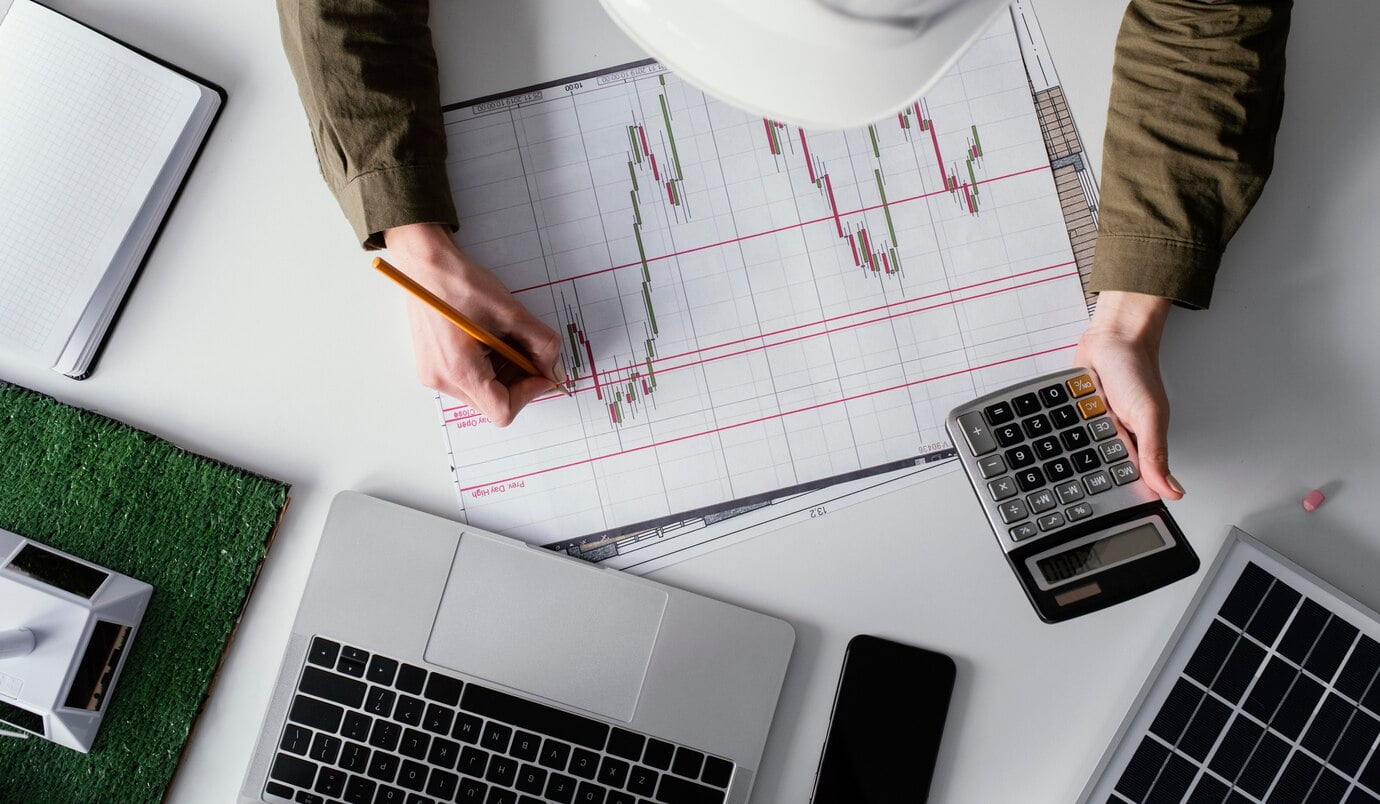SECONDARY MARKET

The secondary market serves as the platform for the buying and selling of listed securities in stock exchanges or securities markets. Price discovery occurs in the secondary market through the interplay of supply and demand forces from investors and traders. If investors anticipate a stock’s value to rise, they will buy shares, leading to an increase in the stock price. Conversely, if a company fails to meet earnings expectations or incurs losses in quarterly results, investors may sell, causing a decline in the stock price due to decreased demand.
Secondary Market – Trading Mechanism : A few years ago, trading on Indian stock exchanges relied on the open outcry system, an offline method. To enhance market transparency, NSE (NEAT), BSE (BOLT), and OTCEI transitioned to a screen-based trading system between 1992 and 1994. Currently, all stock exchanges have adopted online screen-based electronic trading, replacing the offline open outcry system. India’s two major stock exchanges, BSE and NSE, use a combination of order and quote-driven systems, respectively. BSE’s Online Trading System (BOTL) and NSE’s National Exchange for Automated Trading (NEAT) facilitate electronic trading, where orders from across India are matched continuously without the need for intermediaries. This order-driven system provides market depth with two-way quotes, allowing buying and selling based on demand and supply. Similar electronic trading systems are employed by major international stock markets like London, Paris, Toronto, Frankfurt, and Sydney.
The regulation of the secondary market falls under the Securities Contracts (Regulation) Act, 1956, granting statutory powers to stock exchanges. Currently, the functioning of the stock market is governed by SEBI through the Securities Law (Amendment) Act of 1995. SEBI consistently reviews traditional trading systems, aiming to simplify procedures, enhance transparency, and reduce transaction costs. To curb excessive volatility and speculation, SEBI eliminated the badla system, introduced T+2 rolling settlement (recently T+1 in selected Nifty50 stocks), and implemented daily mark-to-market in derivatives trading. All stock exchanges are advised to establish clearing corporations/settlement guarantee funds for timely contract settlements. SEBI conducts regular training programs for intermediaries and brokers, organizing public conferences nationwide for investor education.
Structure and Participants of Secondary Market
Market infrastructure comprises Stock Exchanges, Clearing Corporations, and Depositories. Stock exchanges, acting as the first-level self-regulatory organization (SRO), manage trading execution

through brokers. Clearing corporations, affiliated with exchanges, handle trade processes, including confirmation, settlement, and transaction delivery, offering counter guarantees for trades. In India, NSDL and CDSL serve as depositories, holding shares in demat form on behalf of investors.
Custodians, including Clearing Members, Clearing Banks, Depositories, and Professional Clearing Members, collaborate with institutional investors. They safeguard securities, manage bank accounts, and oversee the transaction process, ensuring the delivery of securities and funds post-trade. While they function as clearing members, they are distinct from trading members.
Depository Participants (DPs) offer demat services to investors, enabling them to hold securities like debentures and mutual funds and trade on stock exchanges. Each DP must obtain SEBI registration before commencing operations. DPs streamline the management of securities in electronic form, facilitating actions like transfer, transmission, and pledging. NSDL and CDSL, the two depositories, securely hold customers’ financial securities, including shares and bonds.
Stock brokers, registered trading members of stock exchanges, are authorized entities facilitating the buying and selling of stocks, ETFs, and derivatives on behalf of investors. They act as regulated brokers, broker-dealers, or registered investment advisers, engaging in transactions on stock exchanges for their clients.
Equity shares, corporate bonds, debentures, and securities issued by private companies transitioning to public limited status or by the government (G-Secs and treasury bills) are listed and traded on stock exchanges.
Emerging Markets : In addition to conventional financial markets, the derivatives market and bancassurance have emerged as significant avenues where banks engage in insurance business.
Derivatives Market and its Structure : Derivatives constitute the financial market for trading contracts between two parties, deriving their value from underlying assets such as stocks, indexes, currencies, interest rates, and commodities. The four main types of derivatives are futures, options, forwards, and swaps. Both over-the-counter (OTC) and exchange-traded derivatives have been introduced in India’s financial markets by BSE and NSE. The value of derivative contracts is influenced by fluctuations in the underlying asset, and these contracts are known for their high leverage.
Derivative contracts serve as a tool for transferring risk without the need to trade the underlying assets. While primarily used for hedging risks, derivatives can also be employed for speculative purposes. Exchange-traded derivatives, with standardized contracts, offer enhanced liquidity compared to over-the-counter contracts. Stock Index Futures, a type of derivative, enables traders to buy or sell a specific stock index at a predetermined price on a specified future date, with contracts available for near, next, and far months. Exchanges have implemented robust risk management measures in the derivative segment, including minimum net worth requirements for brokers, margining based on a 99% Value at Risk (VaR) model, position limits for different participants, and guidelines for daily margin collection and enforcement.
The definition of securities under the Securities Laws (Second Amendment) Act, 1999, now includes the term derivatives. As per the Securities Contracts (Regulation) Act, 1956, the term “derivatives” is defined as:

A Derivative Includes
a. a derivative is a form of security that originates from a debt instrument, share, loan (secured or unsecured), risk instrument, contract for differences, or any other security type.
b. It is a contract whose value is derived from the prices or index of prices of underlying securities.
Futures Contract is a legal contract to buy or sell a specific security or commodity asset through a recognized exchange on a future date at the prevailing market price (underlying price). Futures contracts are standardized contracts in terms of quantity, quality (in the case of commodities), delivery time, and place for settlement on any future date. The contract expires on the expiry date, for example, Nifty or Reliance futures expired on the pre-specified date, December 29, 2022 (fixed at the last Thursday of the month), at the underlying price (spot market price) once the market closes on expiry. On expiry, futures can be settled by the delivery of the underlying asset or in cash. All open positions in a Stock Futures contract and In-The-Money Stock Options that have not been squared off on the expiry date would have to be physically settled. Traders need to either give or receive delivery of the underlying stocks. The final settlement of all futures positions shall be settled on T+1 day, and customers will receive shares or funds on T+2 days. A forward contract is a customized and private agreement that settles at the end of the agreement and is traded between known counterparties.
Options Contract : In finance, an option is a contract that grants the buyer the right, but not the obligation, to buy or sell an underlying asset (such as a stock, index, or commodity) at a specific price on or before a predetermined date. Options provide investors with the opportunity to speculate on or hedge against the volatility of an underlying stock. Options trading is utilized for both hedging and speculation, employing strategies ranging from simple to complex. In India, all exchange-traded options, whether index options or stock options, are of the European type. There are two main types of options: Call Options and Put Options.
[a] Call options are financial agreements providing the option buyer with the right, though not the obligation, to purchase an underlying stock, bond, commodity, or other asset at a predetermined price within a specified timeframe. Profit is realized by the call buyer when the value of the underlying asset rises.
[b] A put option, or “put,” is a contractual agreement providing the option buyer with the right, though not the obligation, to sell—or sell short—a specific amount of an underlying security, bond, or commodity at a predetermined price within a specified timeframe. Profit for the put buyer is generated when the value of the underlying asset decreases.
Option Premium : Option premiums are determined by combining intrinsic and time values. When purchasing an option, you acquire the right to trade the underlying asset at a specified price within a defined period, such as one month for a near-month contract. The cost of this right is known as the option premium. For out-of-the-money options, the premium consists mainly of extrinsic, or time value, while in-the-money options include both intrinsic and extrinsic values. A longer time to expiration or higher implied volatility increases an option’s premium. Call options see higher premiums with an increase in the underlying stock price, while put options experience a decrease. The maximum loss for an option buyer is the premium paid, with the potential profit theoretically unlimited.
There are two type of margin specified in future contract
i. Initial Margin – Initial futures margin is the upfront payment required by both the buyer and seller at the exchange to establish an open position in a futures contract. This amount is determined based on a 99% Value at Risk (VaR)

and worst-case loss scenario over a specified horizon, which is influenced by the time frame for collecting Mark to Market margin. Exchanges typically set initial margin requirements as a percentage, often ranging from 15% to 25% of the value of the futures contract to be traded.
ii. Mark to Market Margin (MTM) – Mark to Market (MTM) is calculated daily at the end of each trading day, settling all open positions (long or short) in the portfolio based on the closing price of the shares. The daily settlement price is determined as the weighted average price during the last half an hour of the futures contract. Positive MTM is observed with a rise in the security’s price, while negative MTM occurs with a fall in price. These MTM amounts are either credited or debited to the trading account of all clearing members. The MTM amount is credited on Day 1 after the daily settlement and is collected in cash or by pledging shares for all futures contracts, adjusting against the available Liquid Networth for option positions.”
Unorganised Market
The unorganised sector of the money market includes unregulated non-bank financial intermediaries and local money lenders such as traders, landlords, seths, shroffs, mahajans, chettiars, etc. These entities provide loans to individuals and institutions in need, often at higher interest rates than the formal markets.

Algo Trading
Algorithmic trading, also known as algo trading, was introduced in India in 2008. It involves the use of computer programs or algorithms that follow predefined instructions to execute trades in financial markets. These algorithms operate at high speeds and frequencies, making them much faster than human traders.
Successful and secure algo trading requires proficiency in coding languages such as Java, C+, C++, Python, R, knowledge of connecting APIs, understanding system dynamics, familiarity with market trends, expertise in quantitative analysis and modeling, and the ability to conduct thorough backtesting of trading strategies.
Rules and instructions in algo trading are centered around factors such as timing, price, quantity, or mathematical models that dictate when to stop based on available limits. In addition to offering profit opportunities, algo trading enhances market liquidity, brings systematic precision to trading by eliminating the influence of human emotions, and reduces transaction costs.
Algo-trading is used in many forms of trading and investment activities including
Mid- to long-term investors or buy-side firms : Long-term investors such as mutual funds, pension funds, insurance companies, and EPFO

funds, which invest for a horizon of 10 to 20 years, utilize algo-trading strategies to purchase significant quantities of stocks. This approach involves breaking down large quantities into smaller batches to avoid influencing stock prices with single trades and to reflect the true market price.
Short-term traders and sell-side participants : Mutual funds, pension funds, insurance companies, and EPFO funds, with a long-term investment horizon of 10 to 20 years, employ algo-trading strategies. This method divides substantial stock quantities into smaller batches, preventing the influence of stock prices with single trades and ensuring an accurate reflection of the true market price.
Systematic trader : Hedge funds, trend followers, and pairs traders implement market-neutral trading strategies, pairing a long position with a short position in highly correlated instruments like stocks, ETFs, commodities, or currencies. Professional traders find programming trading rules and enabling automated computer programs to be a convenient and efficient approach.
Algo-trading, also known as algorithmic trading, refers to a computer program designed to follow predefined instructions or rules within a strategic system (algorithm). Its purpose is to execute trades in the financial market based on the established criteria.
Programming Language Used In Algorithmic : Algo-trading excels in handling large data volumes, with Python offering simplicity and ease for writing and evaluating algorithmic trading structures due to its functional programming approach. While C++ is a popular choice, Python is preferred by finance professionals seeking a manageable entry into programming languages for coding and transitioning.
Common trading strategies used in algo trading are
trend-following strategies, arbitrage opportunities, and index fund rebalancing.
Trend-Following Strategies : In this strategy, traders take a long position when the stock price

Arbitrage Opportunities : Arbitrage opportunity is an investment strategy where an investor simultaneously buys a stock at a lower price in one market and sells it at a higher price in another market, capitalizing on the price difference to generate a risk-free profit. Arbitrage trades are deemed low-risk, and this strategy can also be applied between stocks and futures instruments, especially as futures expire at the same price on the last trading day of the contract.
Index Fund Rebalancing : A portfolio manager’s role involves managing cash flows and rebalancing stocks in response to changes in index composition, aligning holdings with benchmark indices. During index rebalances, fund managers strategically buy newly included stocks and sell those excluded from the index at a proportional ratio. Algorithmic traders seize opportunities in these expected trades, aiming for profits ranging from 20 to 80 basis points, depending on the number of stocks in the index fund, just before the rebalancing. These trades are executed through algorithmic trading systems for timely and optimal prices.
Mathematical Model-Based Strategies : Algorithms employ a sequence of steps and mathematical language to describe the algorithmic system, aiding in the development of accurate assumptions and predictions for strategy formulation. Various types of mathematical models include Linear, Static, Explicit, Discrete, and Deterministic models. Understanding the components of a mathematical model, such as data, input parameters, variables, constants, calibration parameters, phase parameters, noise parameters, random parameters, and output parameters, is crucial before its application. Delta-neutral trading strategies involve trading a combination of options and the underlying security.
Trading Range (Mean Reversion) : This strategy assumes that the high and low prices of a stock are temporary occurrences that revert to their average value (mean value) over time. It is an active investing strategy that involves identifying a price range. Traders implementing this algorithm place buy orders at the bottom or support level and sell orders at higher levels or resistance levels.
Volume-Weighted Average Price (VWAP) : VWAP (Volume-Weighted Average Price) is calculated by summing up the prices of each transaction in a day (price multiplied by volume) and then dividing the total by the shares traded. The goal is to execute orders close to the VWAP. This strategy divides large orders into smaller chunks based on stock-specific historical volume profiles. If the price is above the VWAP line, it suggests an uptrend; if below, it indicates a downtrend.
Time Weighted Average Price (TWAP) : TWAP (Time-Weighted Average Price) is calculated by averaging the open, high, low, and close prices of the entire day and dividing it by the volume. This strategy executes orders based on time, with high-volume traders using it to spread their orders over a specific period. The goal is to execute orders close to the average price between the start and end times, reflecting the true market price and minimizing market impact.
Long-short strategy : Traders employ this strategy to capitalize on potential price moves in both directions. They take a long position in underpriced stocks, anticipating future price increases, and a short position in overpriced shares, expecting future price decreases.
Disclaimer : The information and analysis provided through hyperlinks to third-party websites, while believed to be accurate, cannot be guaranteed by Shareartha. Details are provided for informational purposes and should not be viewed as an endorsement. Third-party websites : www.investopedia.com, www.wikipedia.com and Others.
